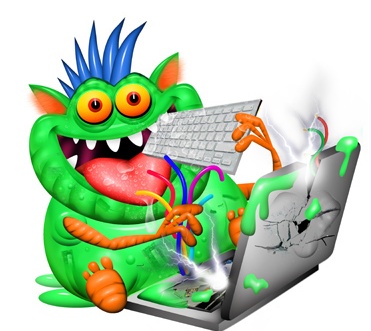
Spyware, Adware, Viruses, Trojans, Worms, Oh My!
By kyle on March 14, 2013
Spyware, Adware, Viruses, Trojans, Worms, Oh My!
If you are reading this article than you have more than likely come across some form on malware in your life. Unfortunately, spyware, viruses, Trojans, and worms have collectively been grouped together and all labeled as “viruses”. However, in most cases this is not true. Being able to understand the difference between the types of malware can be beneficial in removing it, preventing it, and not spreading it to others.
Spyware/Adware
These are programs that are usually downloaded by simply not paying attention. As consumers, we are want things fast, now, and right now. As a result, when downloading freeware programs, we simply select yes, yes, and yes again until the program finished. These place spyware on our computers that monitor our search activities and browser activities in order to attempt to spy on us or steal our valuable information. Adware works in the same way with the goal of trying to see you something through the annoying pop up ads that we have grown so close to. (sarcasm)
Viruses
Nowadays, any type of infection on the computer is labeled a virus. It has become to the go-to assumption for most users, when in fact, viruses make up the least common type of malware infection. Viruses are almost always .exe files. As a result. They are programs that require a user to run them in order for the infection to take place. They, however, can be spread by sending out this program across a network. Email attachments usually contain serious viruses.
Trojans
Like ancient mythology, Trojans are used to deceive us. They install on our computers like normal helpful programs which can be hacked and allow access to more serious forms on malware. These are the hardest to detect, and as a result can be some of the most dangerous paths into our computers.
Worms
Worms are probably the worst type of malware infection that can happen to a consumer. They act very similar to viruses in which the ultimate spread in the main goal of the hacker. Unlike viruses, worms work by themselves and require no help from the user to spread like wildflowers. They can affect users across a network and result in slow, sluggish performance on a computer that can cause freezing and locking up.
Summary
Having an understanding of these can help you recognize when a malware infection exists. Often, people look for the wrong types of symptoms and unknowingly infect others, or have complete system crashes. It is best to run regular scans, uses anti-malware programs, and contact a computer repair company in order to keep your system secure.
For a Free Computer Repair Quote Call (202) 670-9966
Related Computer Repair Articles
Why is My Computer So Slow????Why is my computer constantly rebooting?
Is a Wireless AC Router Worth it Right Now?
Still Using Windows XP
Microsoft announces new tablet at L.A. press conference



Leave a Reply